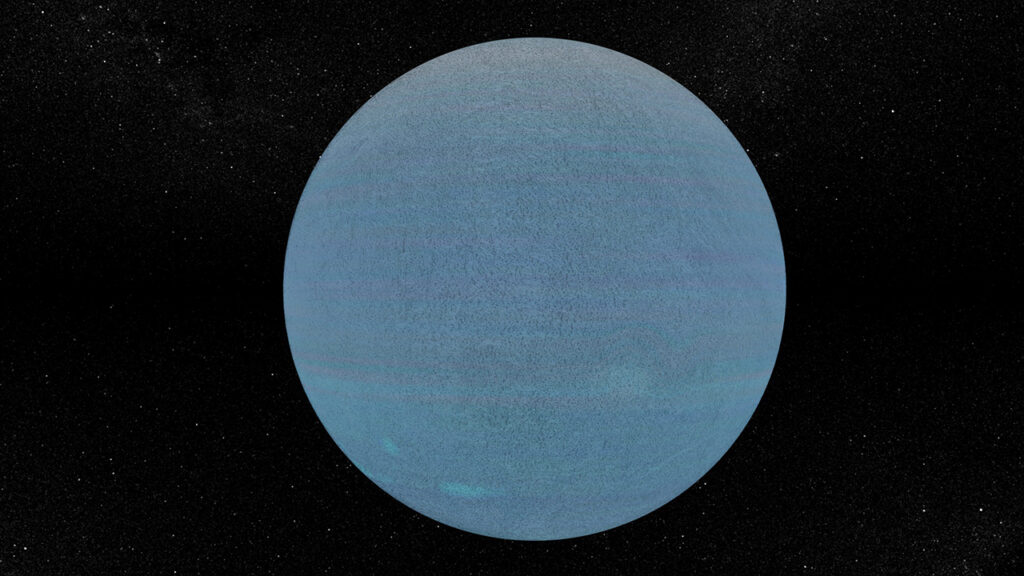Uranus is the seventh farthest planet from the Sun in the solar system and is classified as an ice giant planet. Compared to gas giant planets such as Jupiter and Saturn, its composition and structure are different. In Western culture, it is named after the ancient Greek sky god Uranus. In Chinese, it is called “Uranus”.

Uranus has a diameter of approximately 50724 kilometers, which is about four times the diameter of Earth. Its mass is about 14.5 times that of the Earth. The atmosphere of Uranus is mainly composed of hydrogen and helium gas. It also contains a large amount of methane, which gives this planet a unique blue-green color. Compared to other gas and ice giant planets, the cloud characteristics of their atmospheres are relatively calm.
Uranus is one of the coldest planets in the solar system. The temperature of its upper atmosphere can be as low as minus 224 degrees Celsius. Characteristics of celestial motion and orbit: Uranus orbits the Sun at an average distance of approximately 19.22 astronomical units. Its orbital period is approximately 84 Earth years. Its average orbital speed is about 6.81 kilometers per second. The uniqueness of Uranus lies in its extreme inclination of its rotational axis. It rotates laterally, with its axis tilted at approximately 98 degrees. This means that it basically revolves around the sun while lying down. Its rotation period is about 17.24 hours. So far, only one spacecraft, Voyager 2, has flown past Uranus. In 1986, Voyager 2 provided the first close-up images and data of Uranus and its moons, providing scientists with valuable information about Uranus’ atmosphere, magnetic field, and satellite system.
Leave a Reply